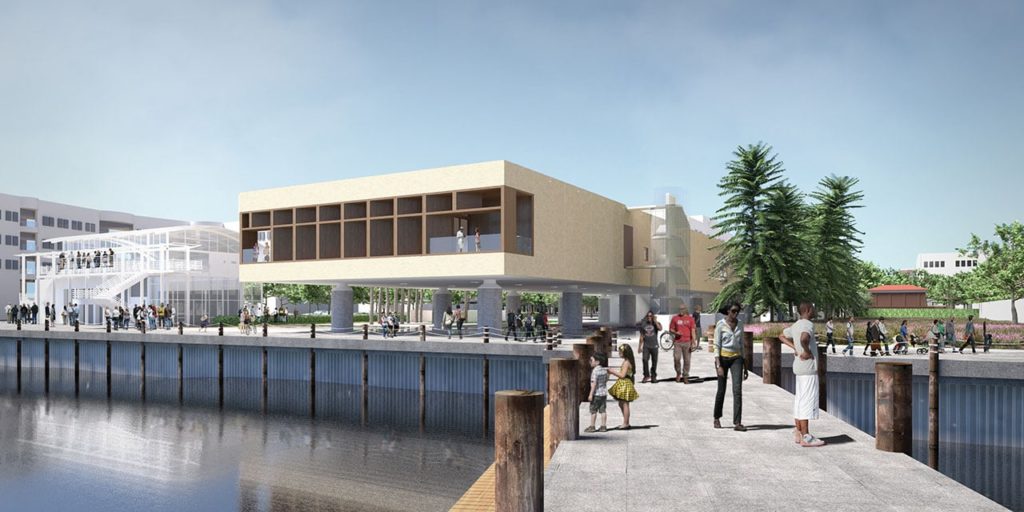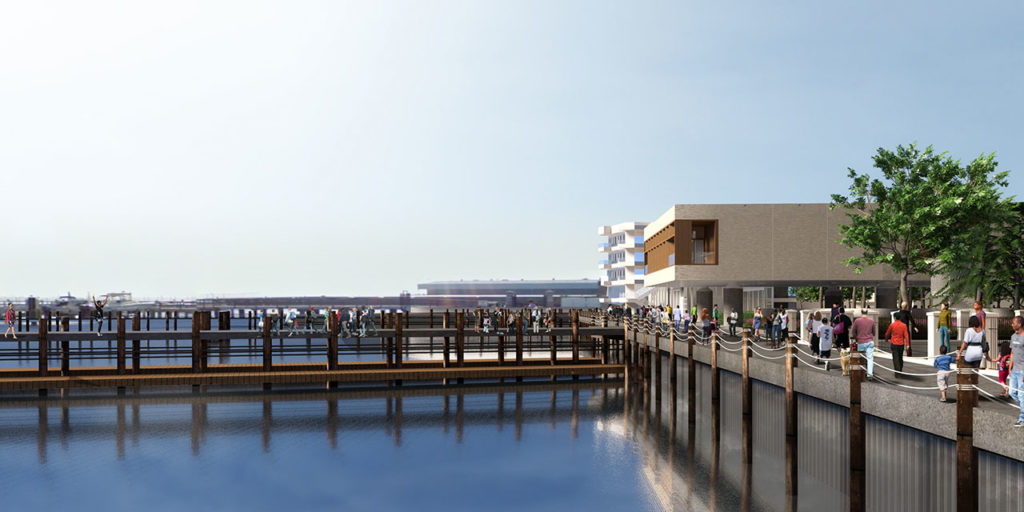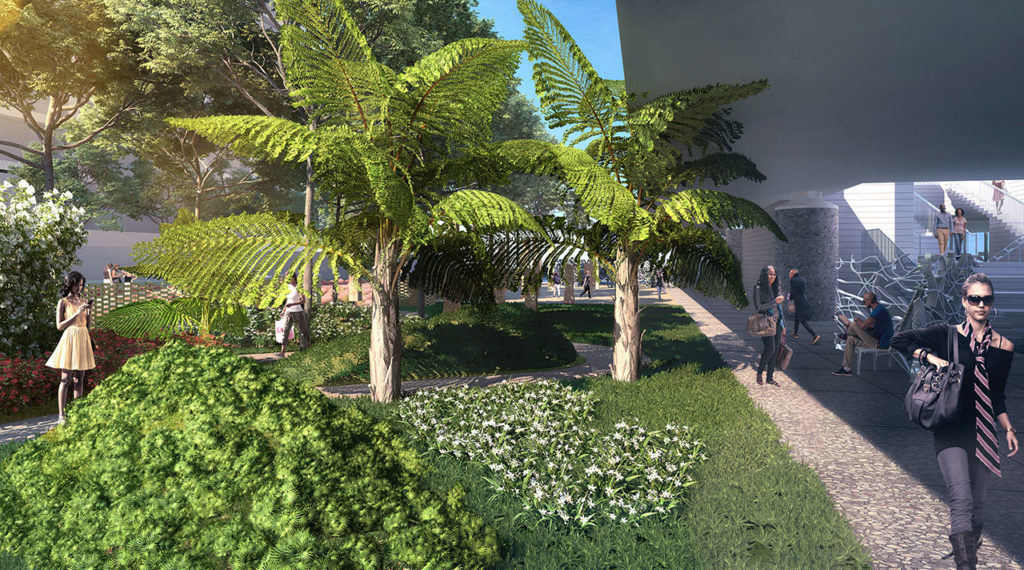
On the waterfront site that was the port of arrival for nearly half of all enslaved Africans brought to North America in the eighteenth and nineteenth centuries, a long-anticipated museum dedicated to telling their stories and celebrating the contributions of their descendants has at last broken ground. Proposed in 2000 by Charleston’s longtime mayor Joseph P. Riley Jr., the International African American Museum (IAAM), designed by New York–based architectural firm Pei Cobb Freed & Partners, is now under way. Moody Nolan, the largest African-American-owned design firm in the United States, is executive architect.

The museum is rising on what was once Gadsden’s Wharf, built by slave labor in 1767 and the most important disembarkation point for enslaved Africans brought to the United States. It is estimated that 80 percent of African Americans alive today can trace their ancestry to the wharf, and the significance of the site informs the design throughout.
“As the place where thousands of Africans from diverse cultures first set foot in North America, Gadsden’s Wharf is not just the right place to tell this story; it is hallowed ground,” said the lead designer for the project, Henry N. Cobb. “The special design challenge of the museum was to build on this site without occupying it.”

The response is a work of architecture that will serve and celebrate IAAM’s mission by granting primacy to the seascape it fronts, the landscape that frames it, and the memorial it shelters. The museum will be housed in a 426-foot-long, 84-foot-wide single-story volume hovering thirteen feet above the ground and supported on eighteen cylindrical pillars arranged in two rows. Reflecting a careful contextual response to the highly charged historical site, the long side walls will be clad in pale yellow brick, while the glazed end walls will be framed by African sapele louvers, directing views to the Atlantic on the east and downtown Charleston on the west. The supporting columns will be clad in traditional oyster-shell tabby, also used as paving in portions of the landscape.

With the exception of two service cores framing a central skylit stairway, the entire ground plane beneath the building will remain open, representing the heart of the site’s collective memory. On the east side of this open space, oriented to the harbor and ocean beyond, a shallow reflecting pool will signify the edge of Gadsden’s Wharf as it was at the beginning of the nineteenth century, at the peak of the slave trade. On the west side, oriented to Concord Street and Gadsdenborough Park, granite paving will demarcate a sheltered gathering place for group activities and performances.

The African Ancestors Memorial Garden, designed by landscape architect Walter Hood, embraces the entire site, deploying elements of low-country landscape as it celebrates the arts, the crafts, and the labors of African Americans. The garden is bounded on one side by a shallow pool—a metaphor for the Atlantic—whose sharply defined western edge marks the original seawall of Gadsden’s Wharf, while its soft eastern boundary evokes the limitless ocean beyond.
In addition to historical and cultural exhibits, designed by Ralph Appelbaum Associates, the 41,800-square-foot building will house a family history center for ancestral research and a social justice action lab. IAAM is scheduled for completion in late 2021.
comments